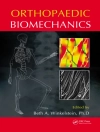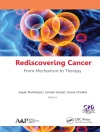The toxicology of metals has been concerned in the past with effects that produced clinical signs and symptoms. However, this view of metal toxicology has expanded in recent years due principally to two advances. There has been a considerable increase in our knowledge of the biochemical effects of metals. In addition, biomarkers of toxicity can now be recognized that identify toxicity at levels of exposure that do not produce overt clinical effects. Thus, the toxicology of metals is now focused on nonclinical events that reflect adverse health effects. This new awareness has produced the challenge of determining the lowest adverse level of exposure. With increasing analytical sensitivity and methodologies to detect small changes at the molecular level, the lowest level of exposure of some toxic metals, like lead, is very small. Indeed, for metals in which there is no biologic requirement, it may be questioned whether there is a level of exposure that does not produce some degree of toxicity. For essential metals, the question is being asked as to the levels at which exposure exceeds biologic require- ments and excess exposure becomes toxic. The appropriateness of health decisions and the formation of public policy are dependent on the availability of current scientific information that addresses these questions. The information in this volume is intended to be a resource for this purpose as well as a reference for students of toxicology and other health professionals.
M. George Cherian & Robert A. Goyer
Toxicology of Metals [PDF ebook]
Biochemical Aspects
Toxicology of Metals [PDF ebook]
Biochemical Aspects
¡Compre este libro electrónico y obtenga 1 más GRATIS!
Idioma Inglés ● Formato PDF ● ISBN 9783642791628 ● Editor M. George Cherian & Robert A. Goyer ● Editorial Springer Berlin Heidelberg ● Publicado 2012 ● Descargable 3 veces ● Divisa EUR ● ID 6333401 ● Protección de copia Adobe DRM
Requiere lector de ebook con capacidad DRM











